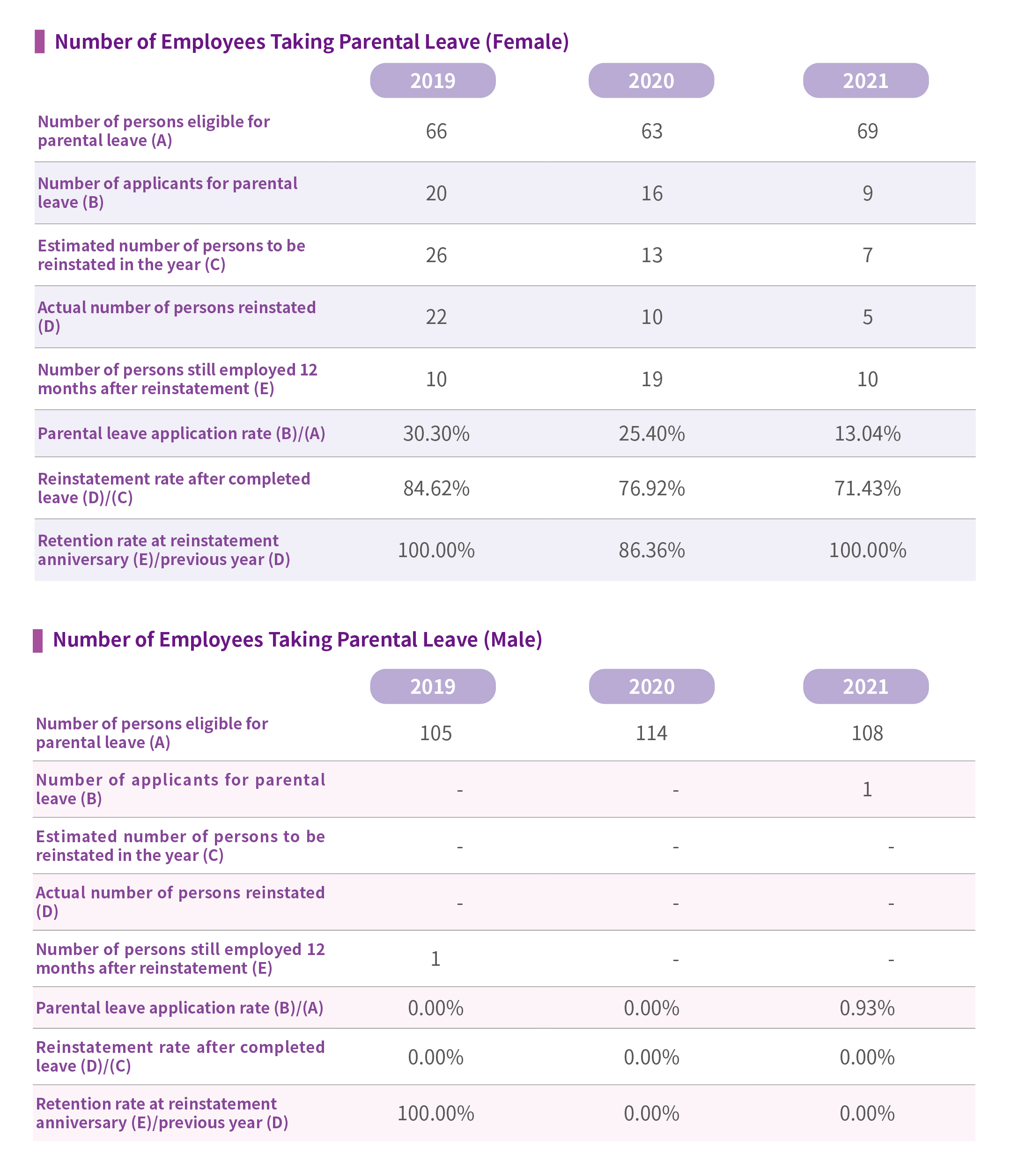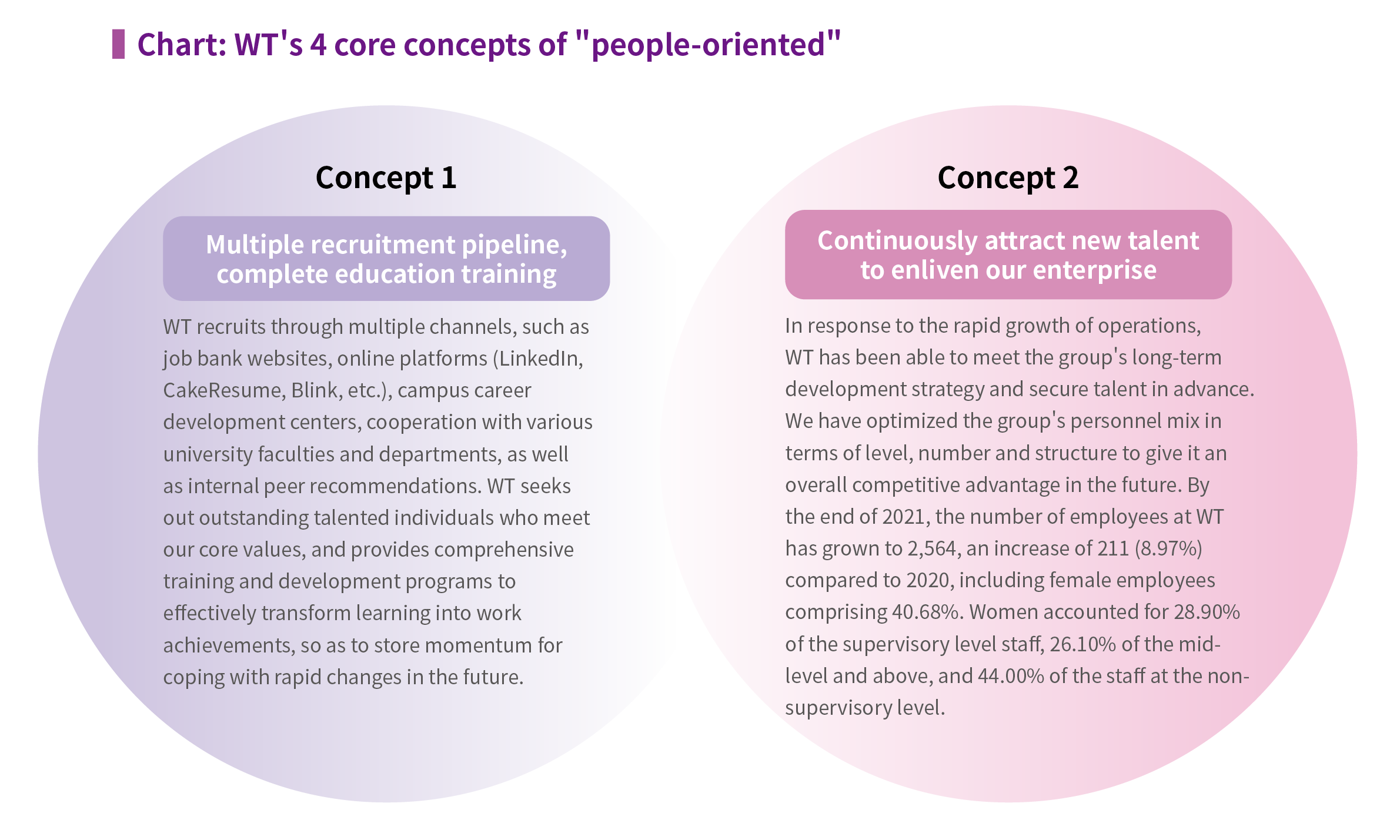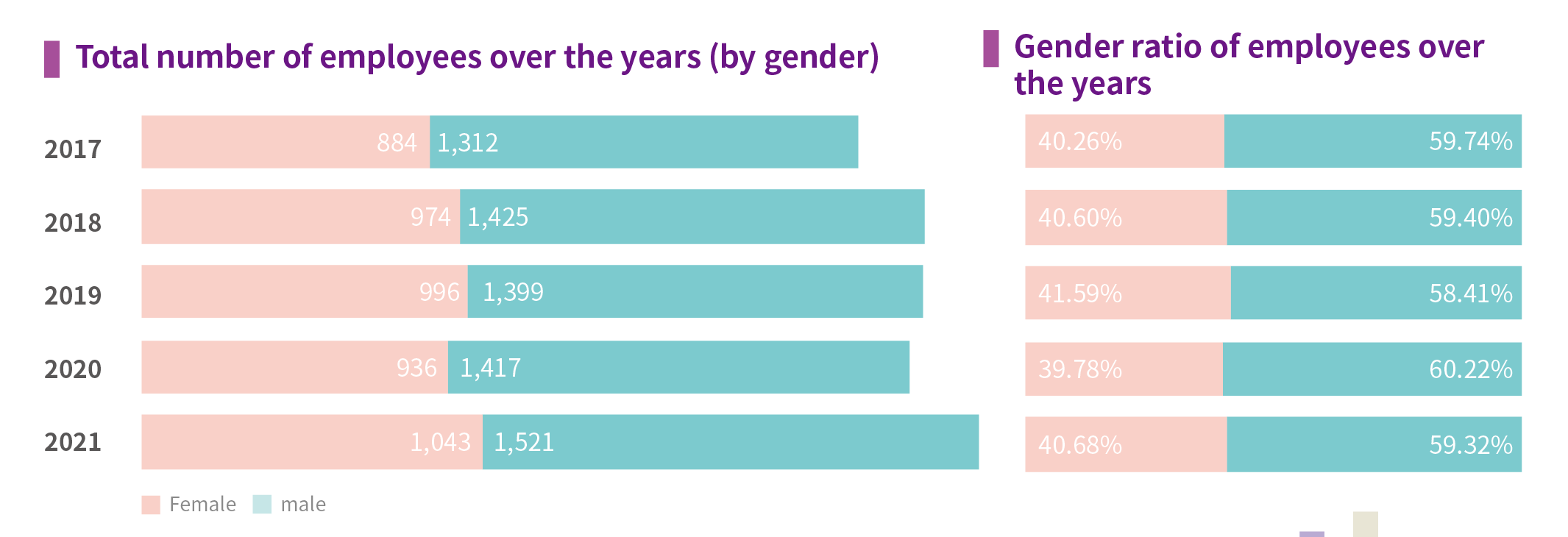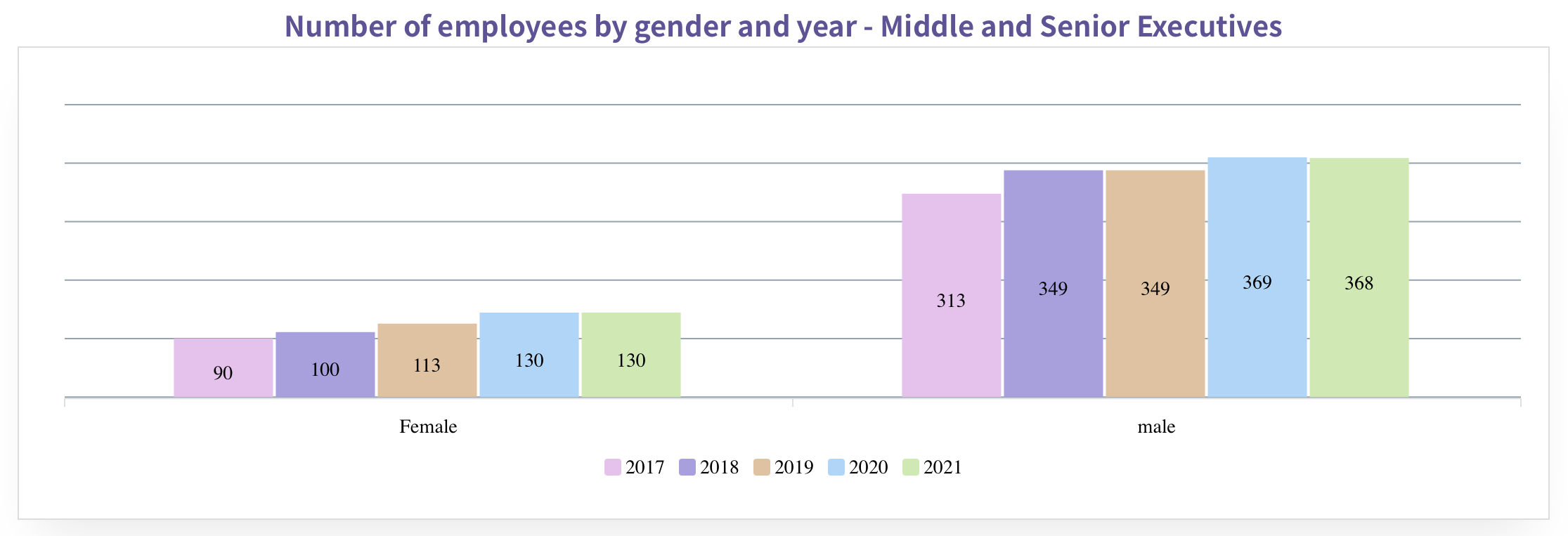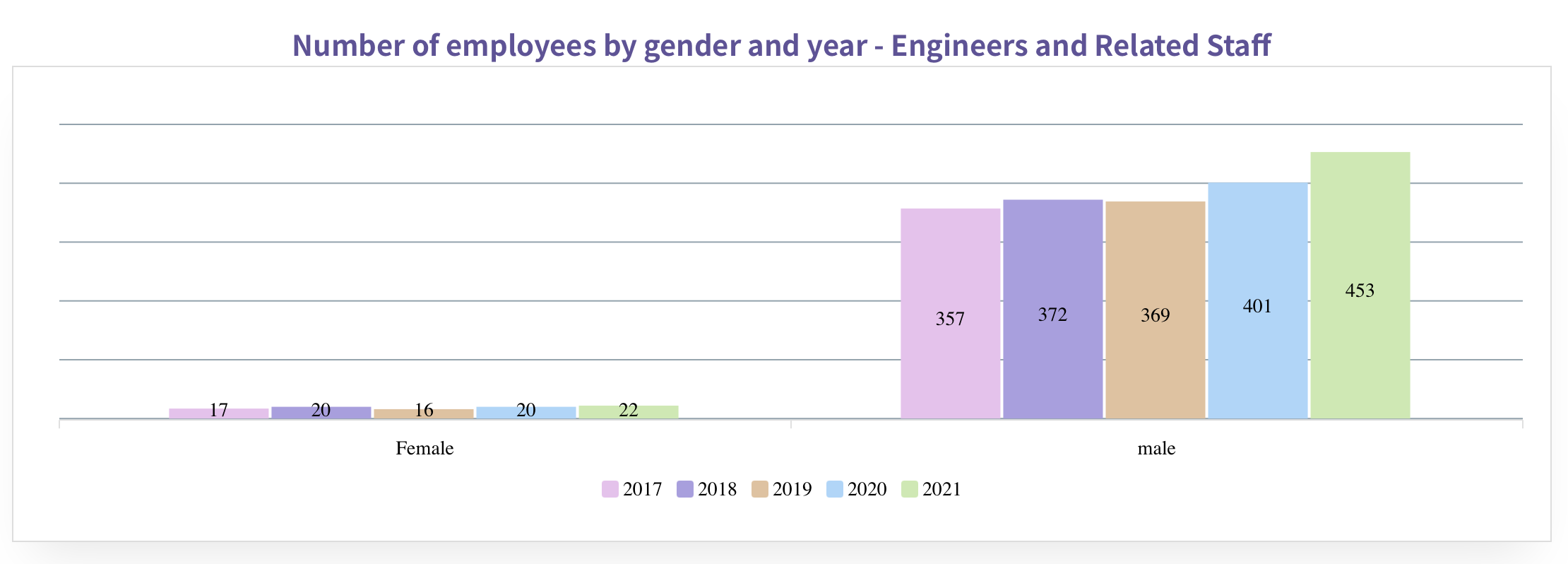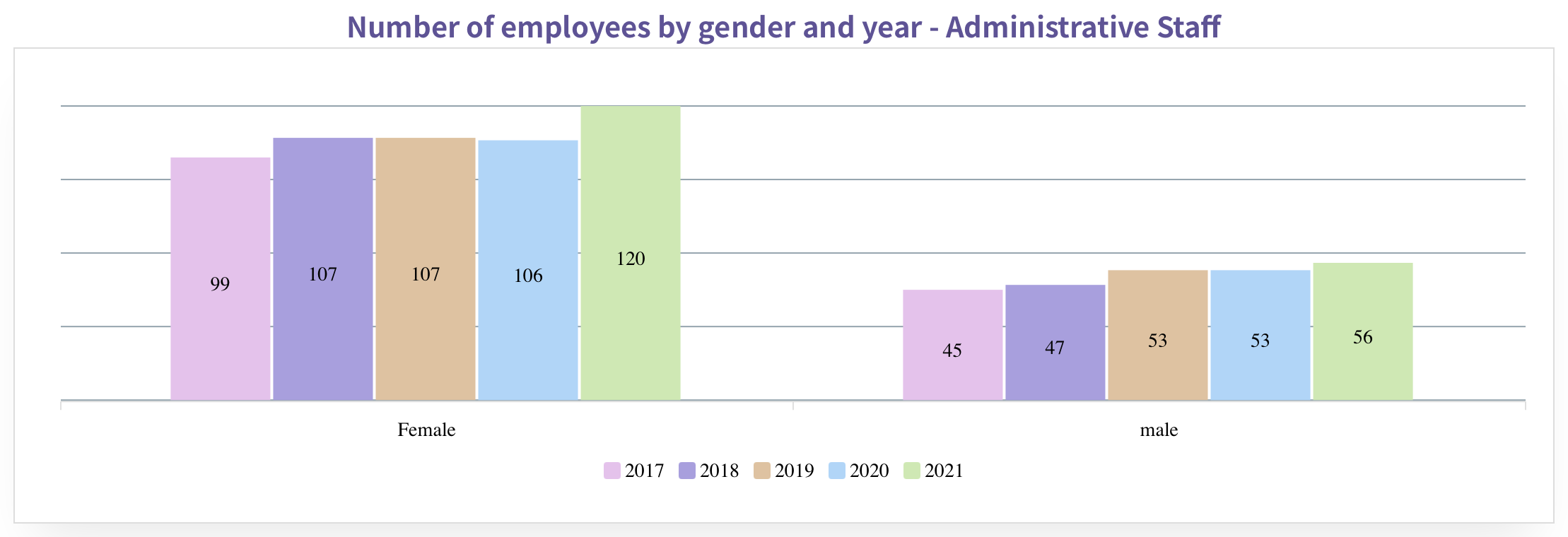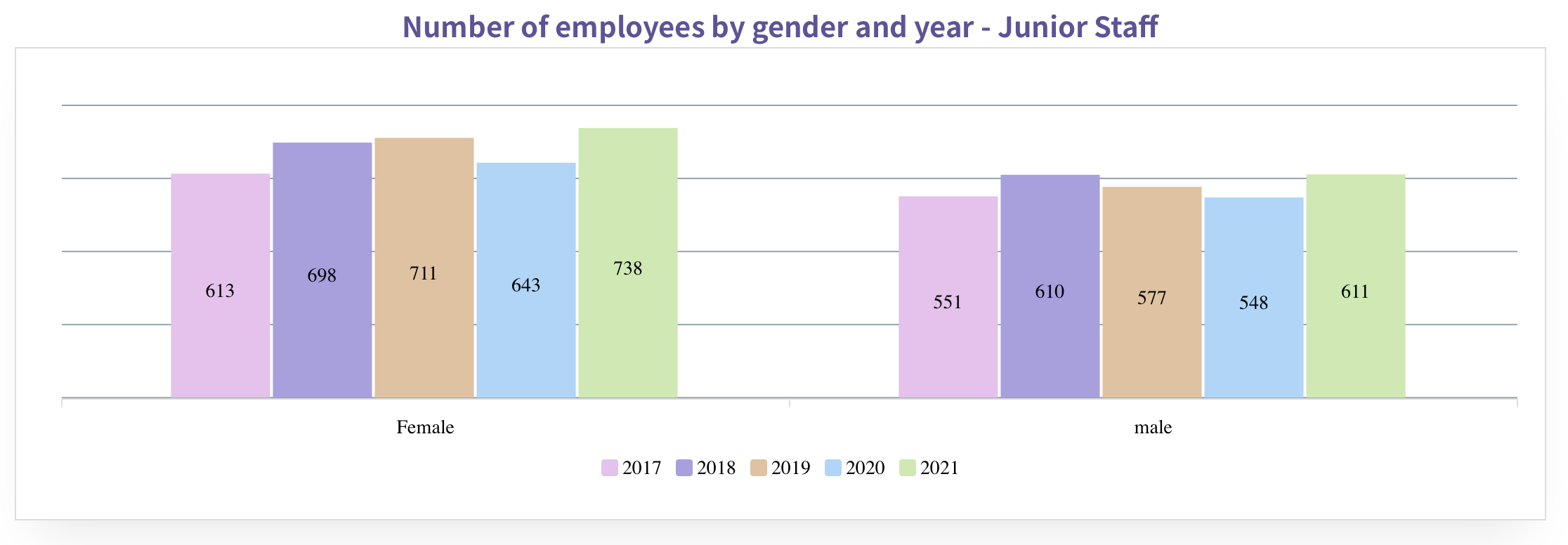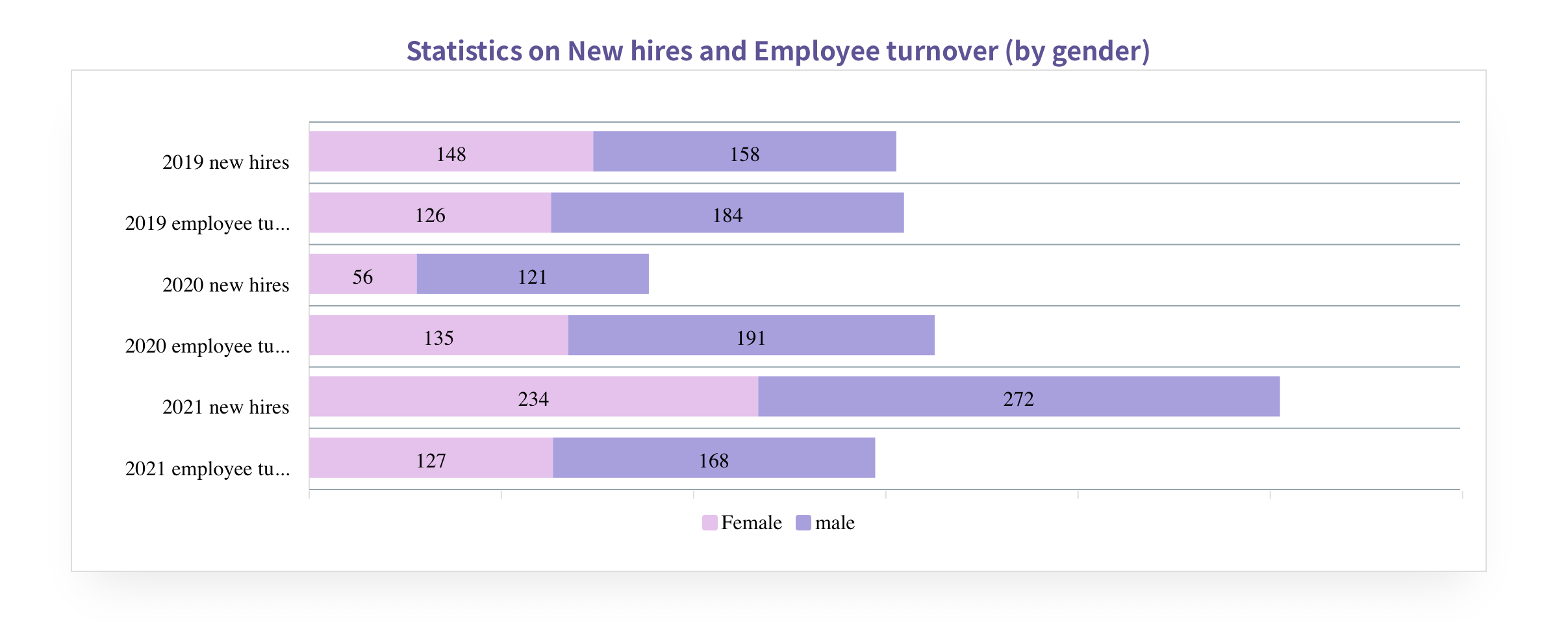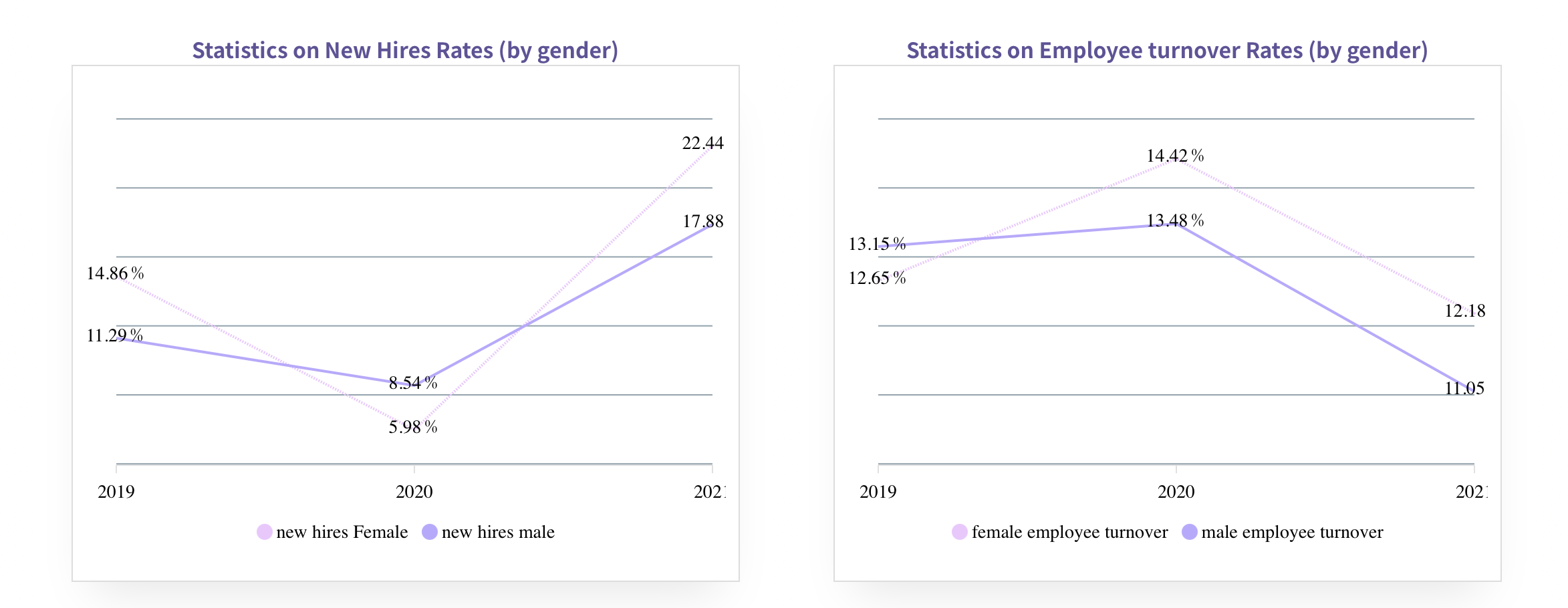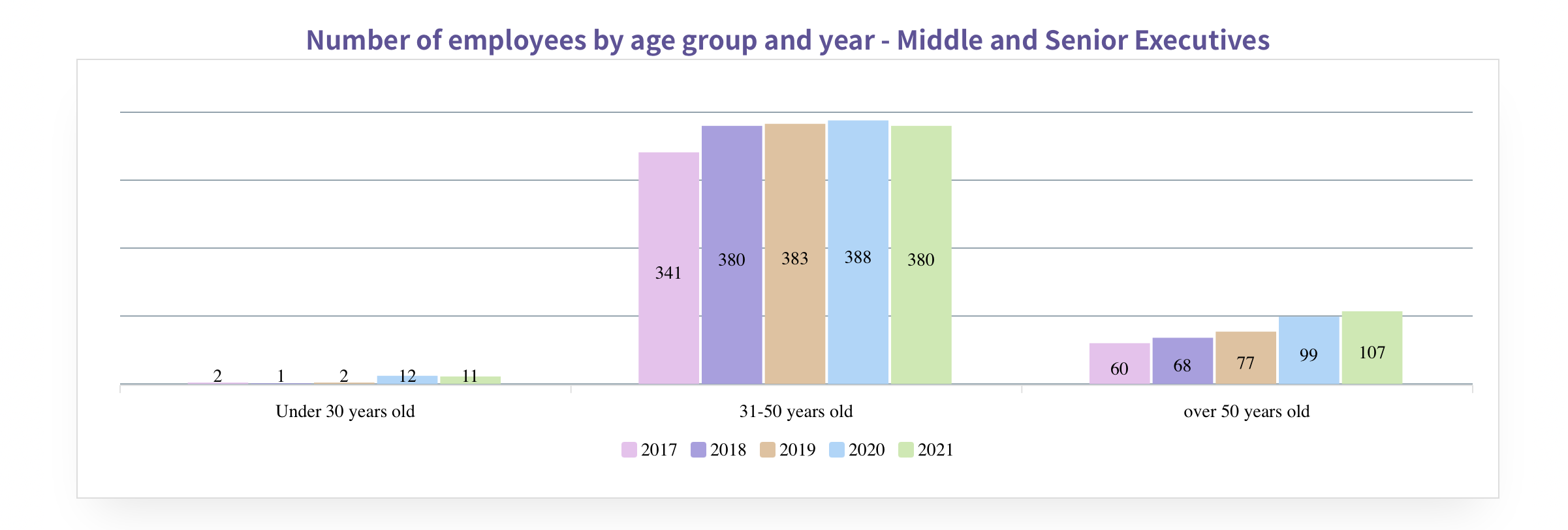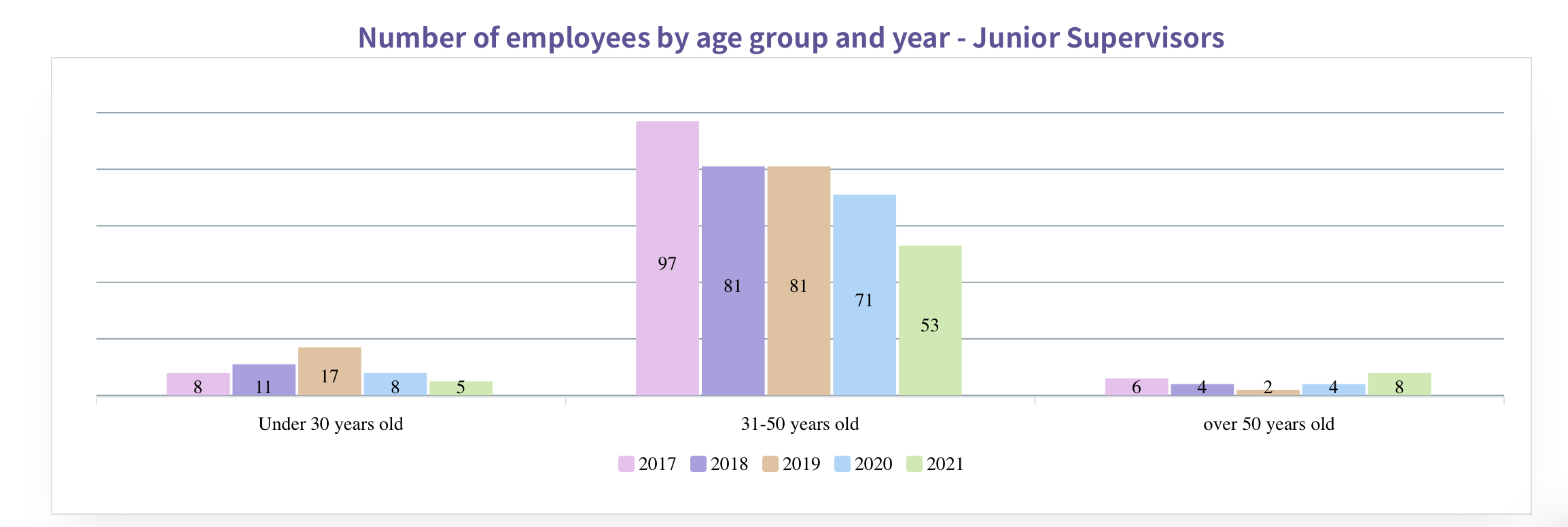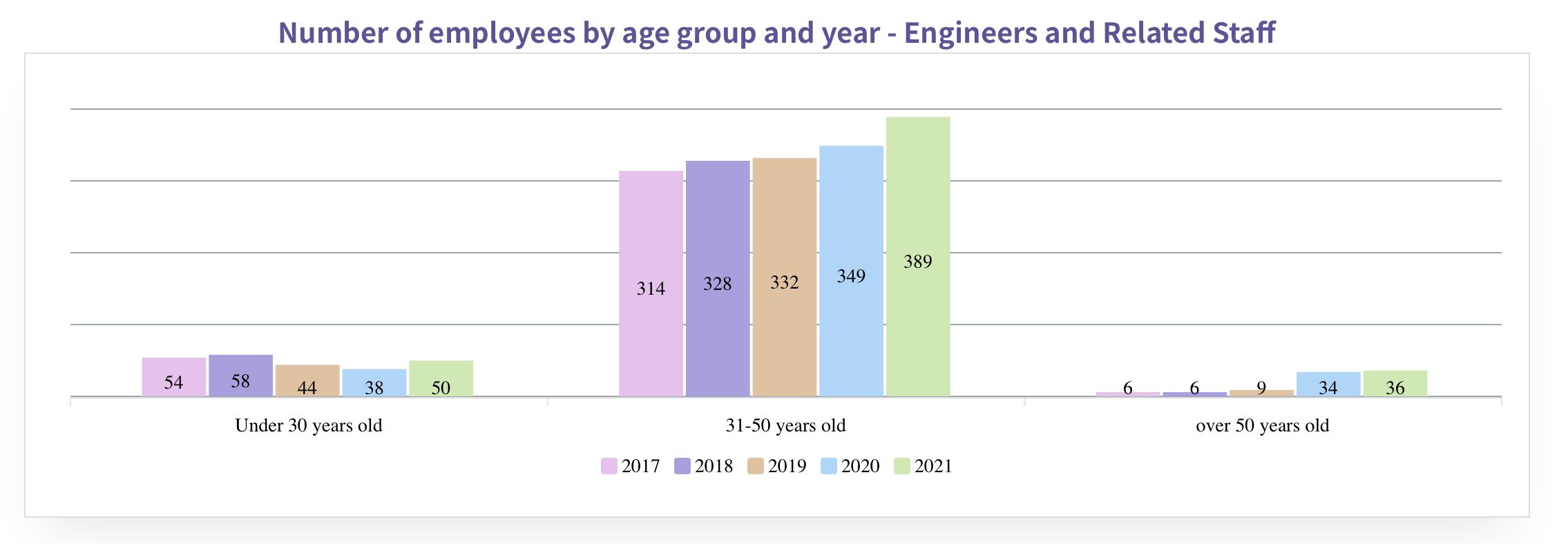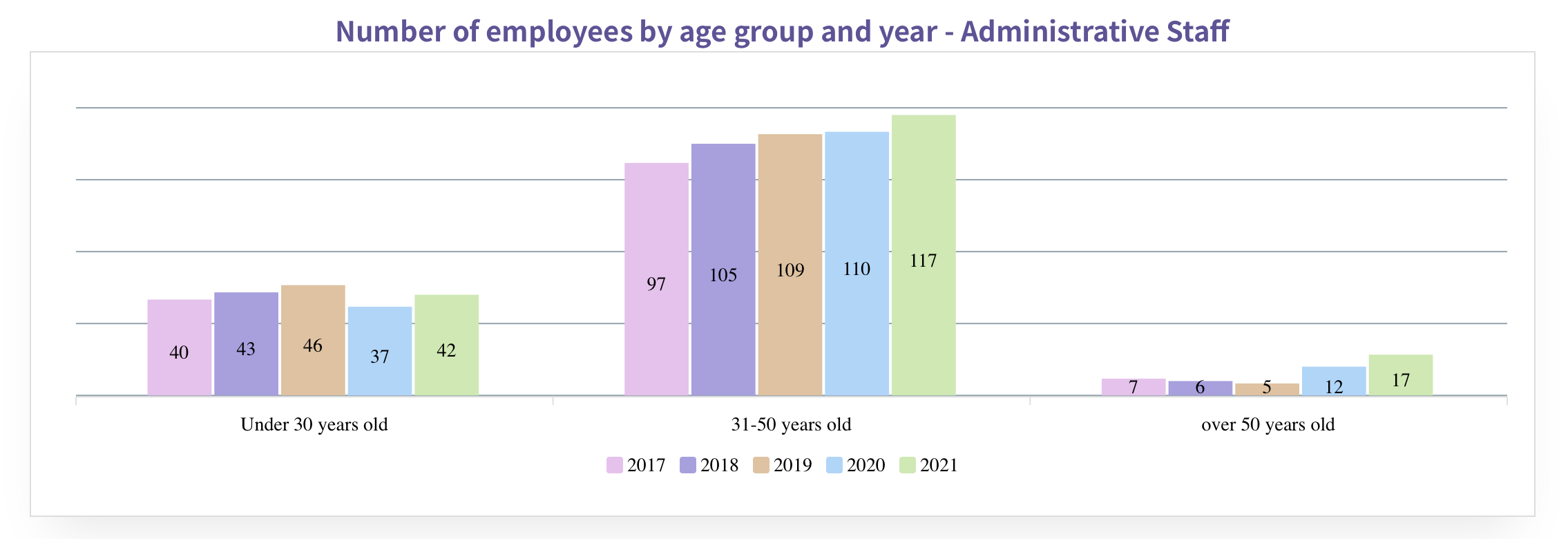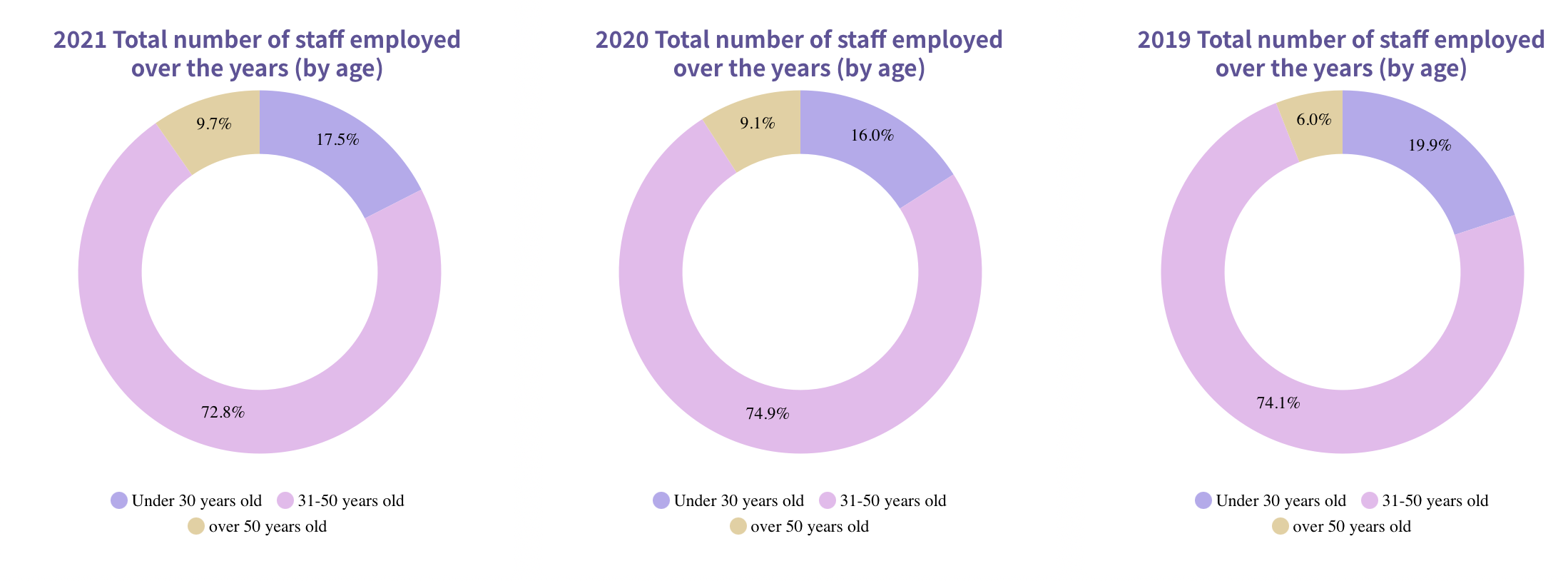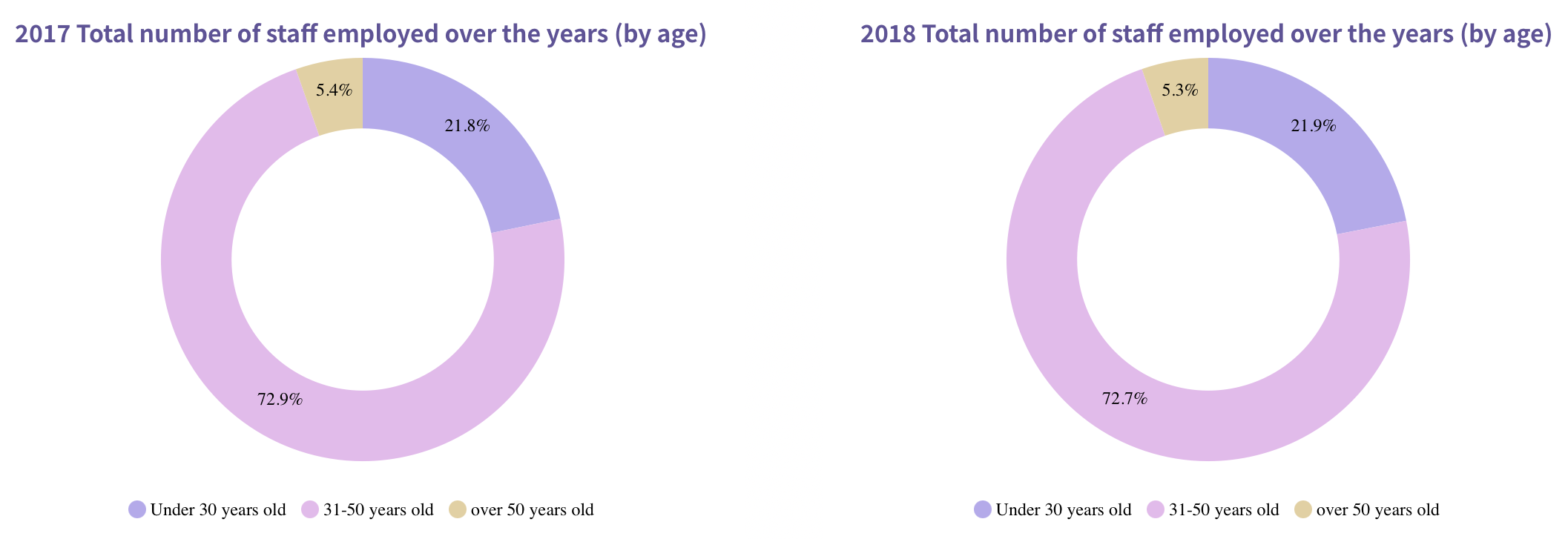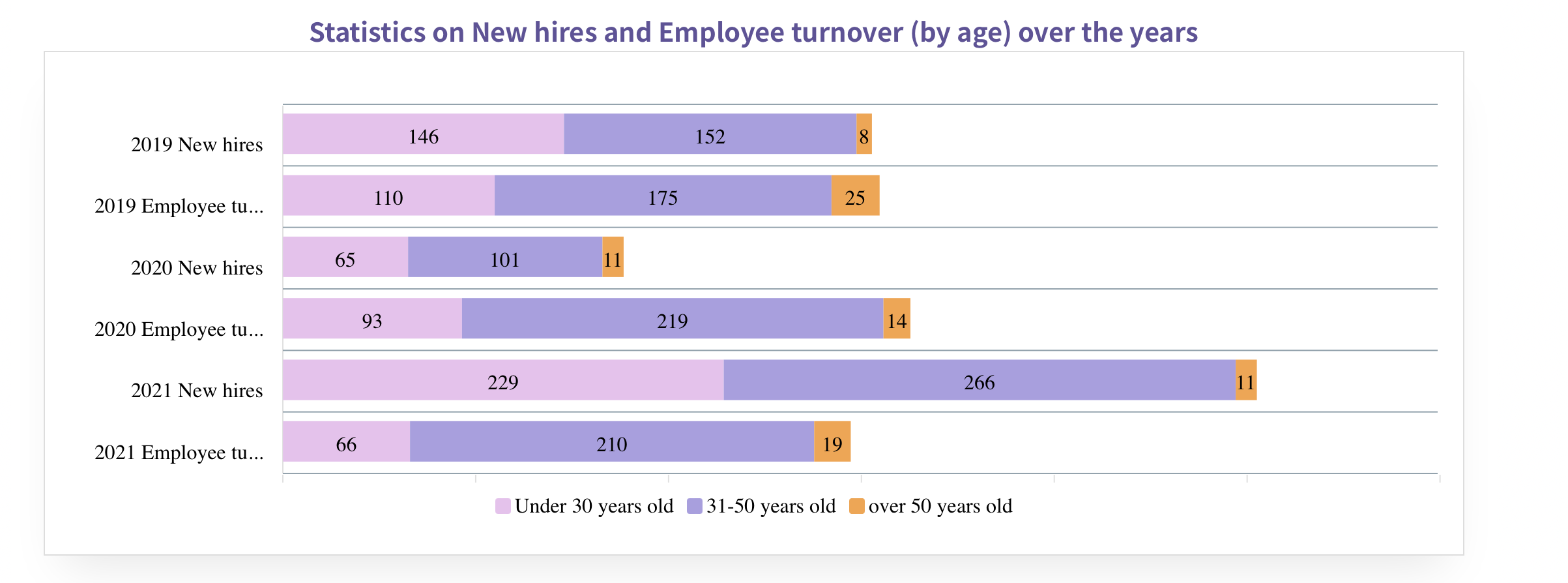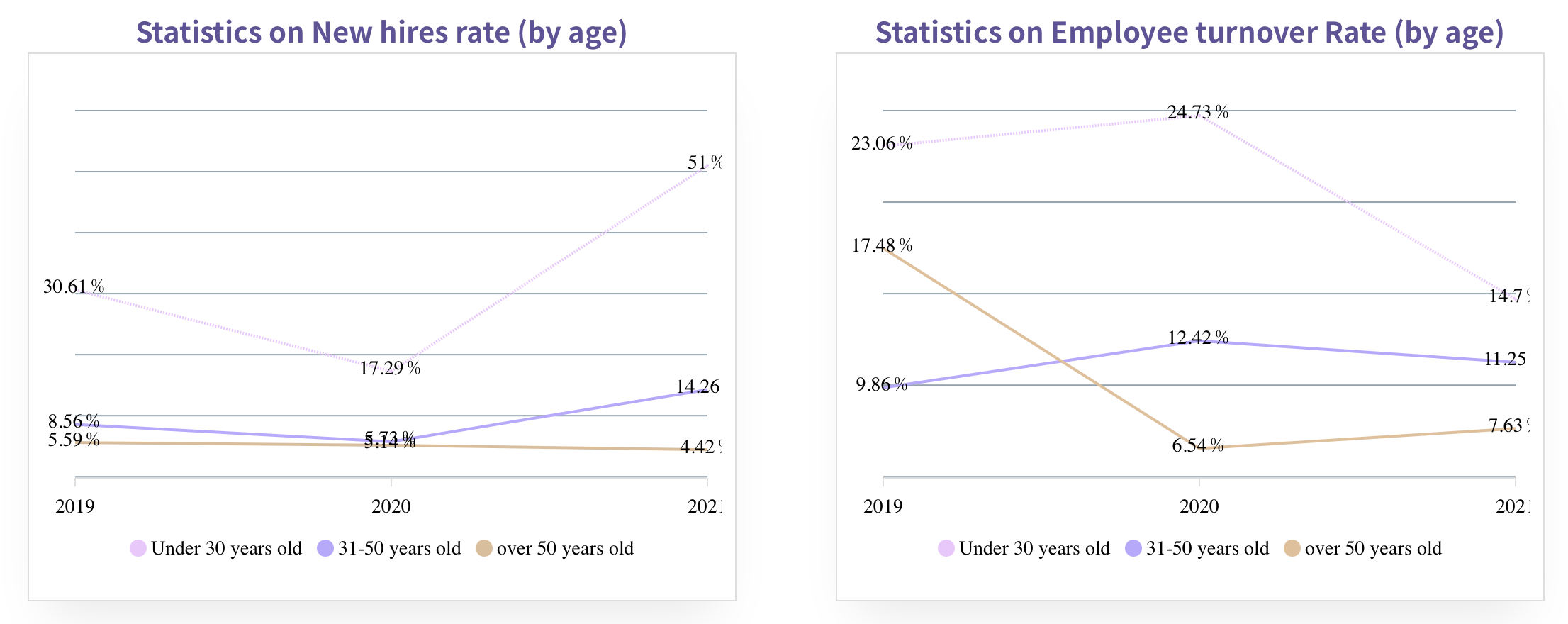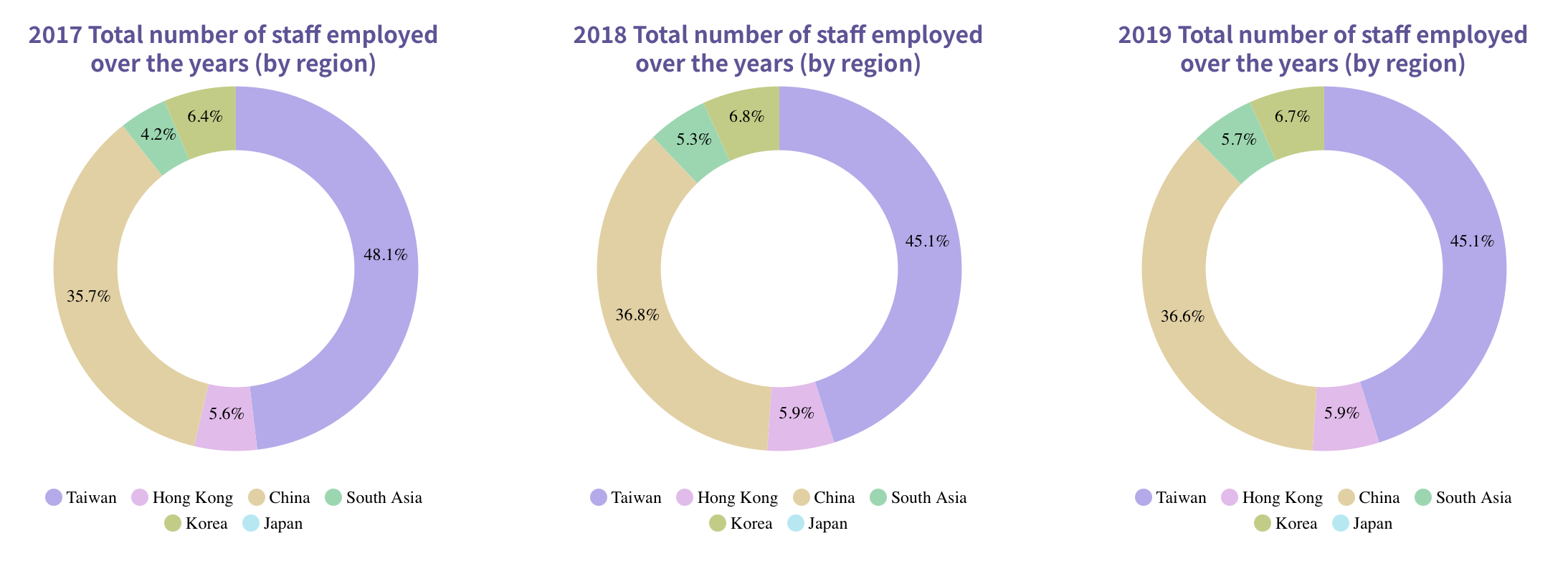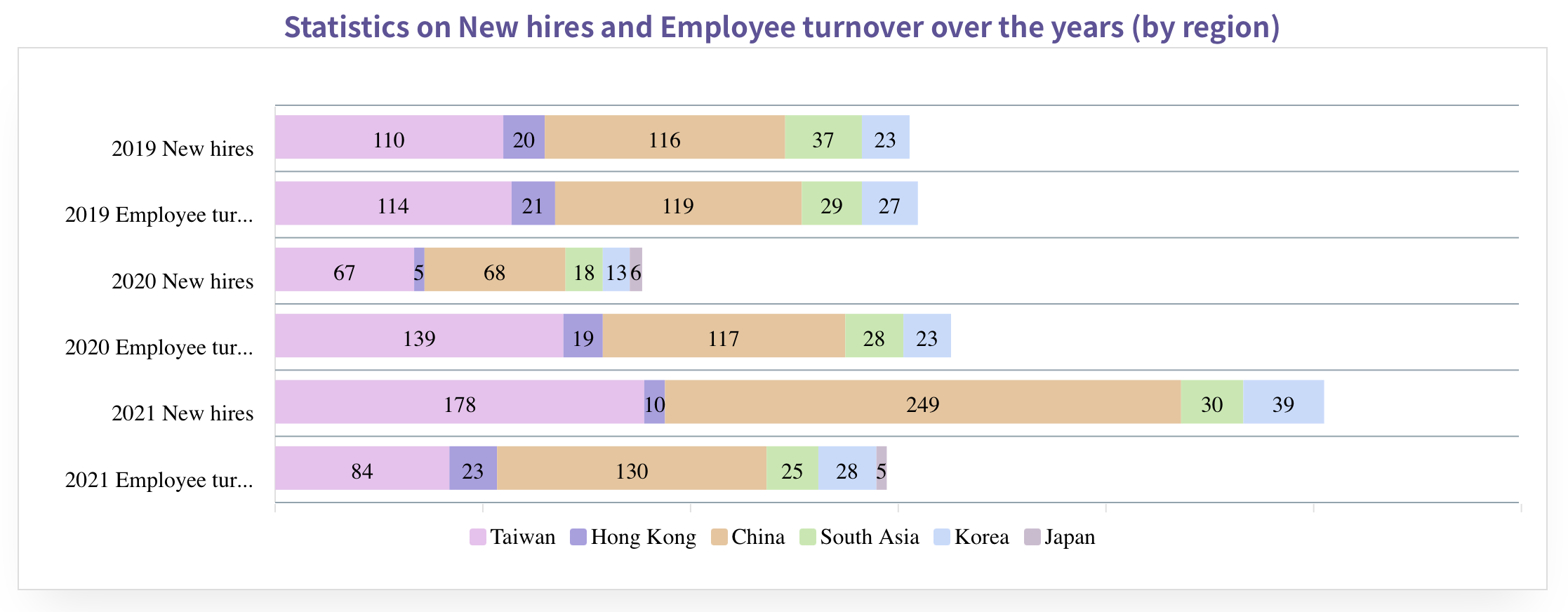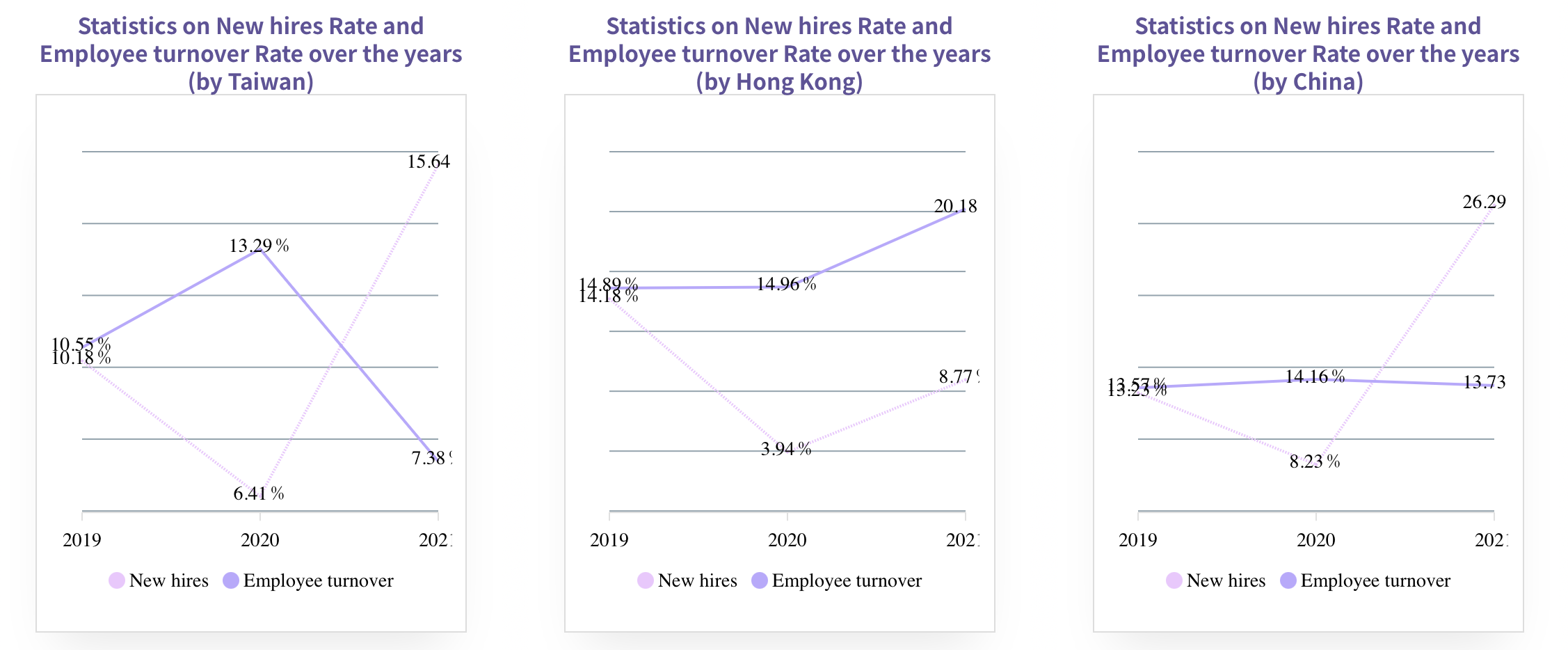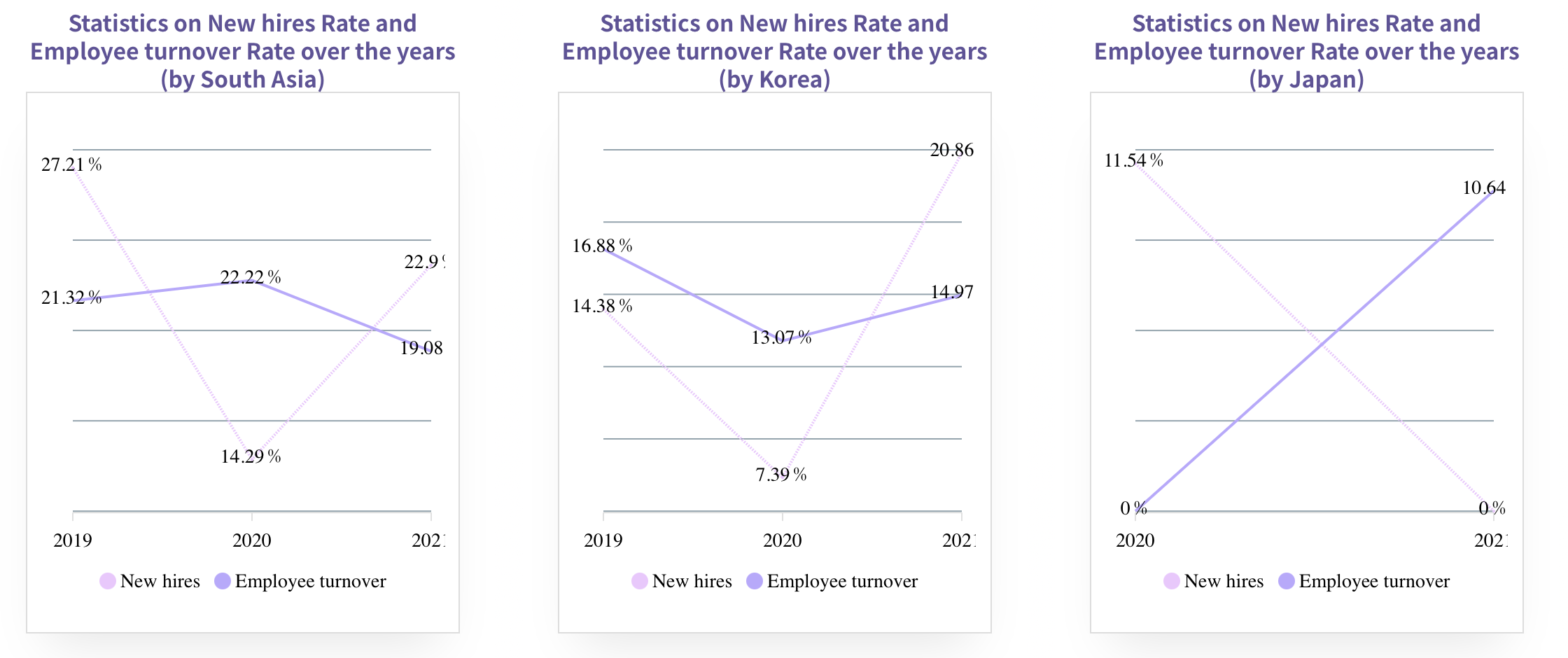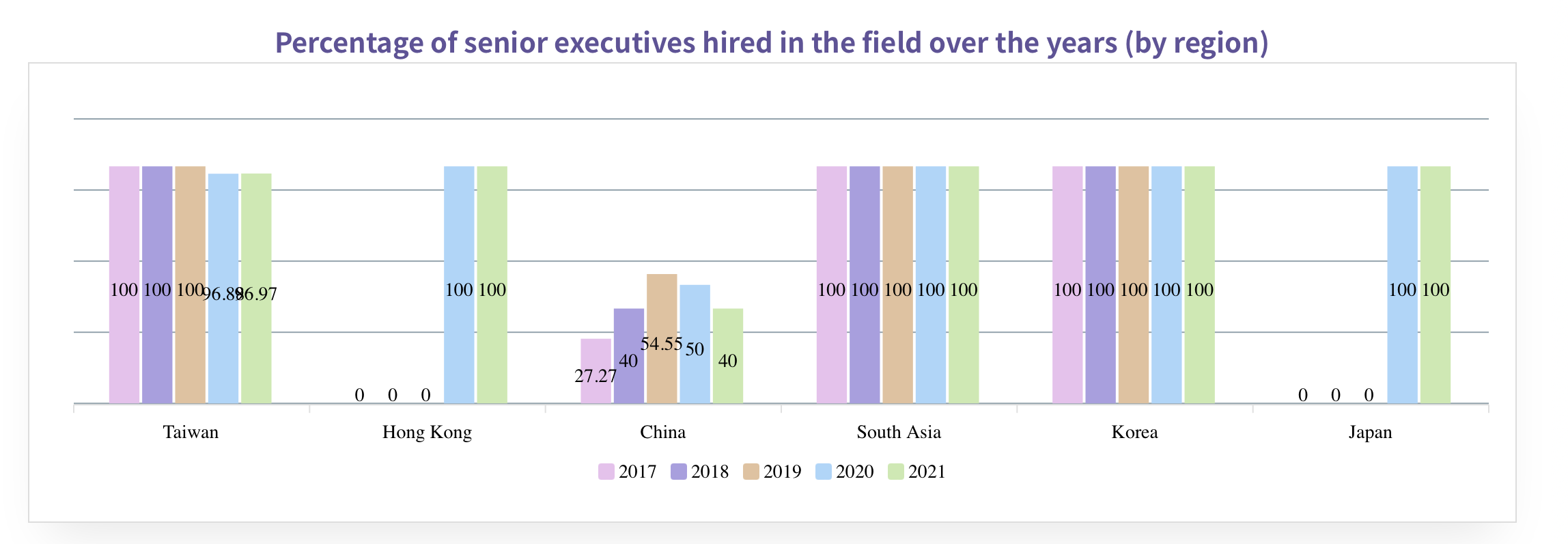WT values the welfare and rights of its employees and actively promotes harmonious relations between employers and employees. Work rules and various management regulations have been formulated in accordance with the Labor Standards Act and relevant laws and regulations, and Sustainable Development Best Practice Principles has also been formulated to specifically regulate the rights and obligations of both employers and employees in management matters, so that employees can fully understand them and comply with and protect their legitimate rights and interests. WT informs employees of any changes in the operating conditions before the statutory minimum notification period in order to protect the rights and interests of employees.
Implementing human rights risk assessment to create a work-friendly environment
WT follows various international human rights conventions and initiatives such as the Universal Declaration of Human Rights, the United Nations Global Compact (UNGC) and the Declaration of Fundamental Principles and Rights at Work issued by the International Labour Organization (ILO). We have formulated a Social Policy and Code of Conduct, which was signed by the Chairman and published on the company’s official website as a standard for all employees, clients, suppliers and other stakeholders to follow.
In 2021, the results of the human rights risk assessment carried out at WT headquarters in Taiwan revealed no high-risk employees in a total of 13 items in five categories. At the same time, through various education and training mechanisms, WT continues to raise the awareness of human rights issues for all employees, including conducting publicity in pre-employment training for new employees, and through the WT e-Learning Academy, employees can browse relevant online courses at any time. The actual number of employees who completed the training was 206.

Establish multiple channels for smooth communication
WT provides a good platform for communication so that all relevant parties can access the stakeholders’ section on the company’s official website. Internal employees can also submit their feedback through HR emails, telephone calls or in writing to communicate with the company regarding problems or issues encountered in various work systems and environments.
At the same time, we hold regular meetings with our supervisors and departments and notify our employees of operational changes that may have a significant impact on them by means of announcements. Up to now, employees’ rights and interests are well protected and there have been no major employer-employee disputes or negotiations. With good communication and interaction between the two parties, we can keep maintaining harmonious labor relations in the future.
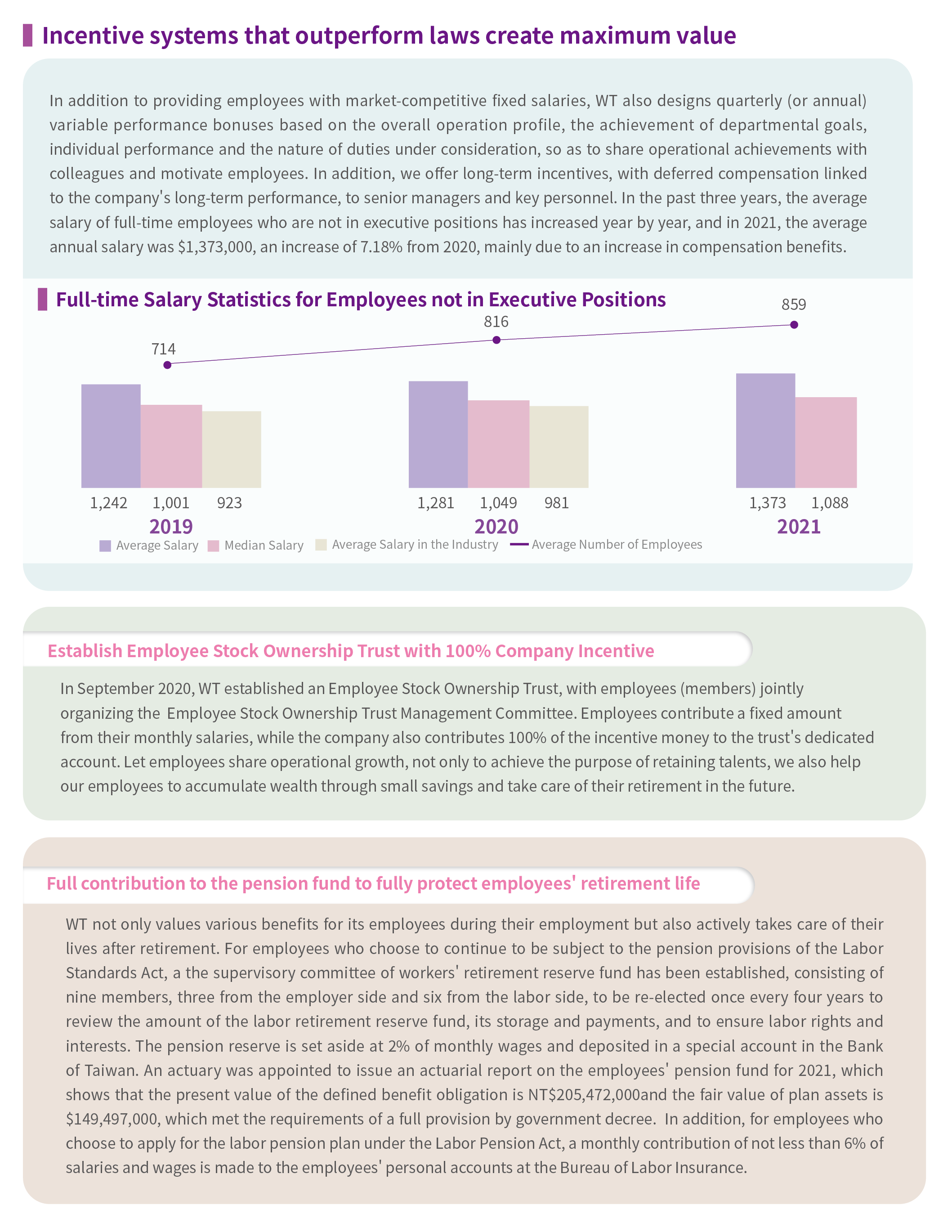
WT believes that only by providing employees with a secure working environment and a perfect welfare system can employees give full play to their strengths without any worries and create maximum value. The benefits provided to full- time employees in 2021 include group insurance, wedding and maternity benefits, health checkups, holiday gifts, staff trips, departmental and club activities, various seminars, and various welfare items. The cost of these benefits was approximately NT$62.2 million.
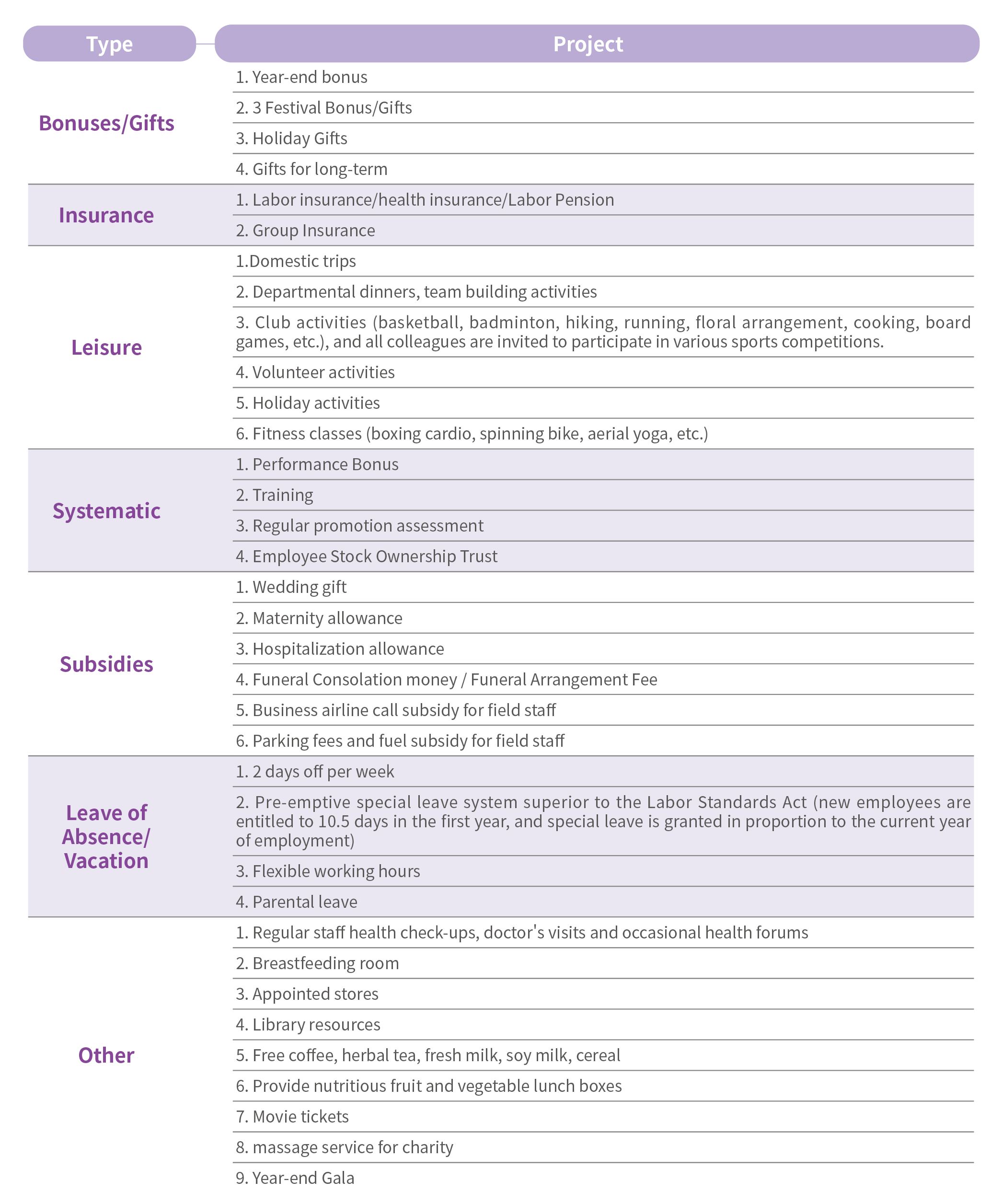
100% retention rate after one year of reinstatement from parental leave
According to the regulations of the Gender Equality at Work Act, WT provides employees in Taiwan to apply for parental leave until their children reach the age of 3. The number of expected reinstated employees in 2021 is 7, and the actual number of reinstatement is 5 people. The number of female employees’ reinstatement in 2020 is 10. The retention rate after one year of reinstatement is 100%, and the average retention rate in the past three years is 92.86%, which shows that the reinstated employees can still adapt to work and family life after returning to the workplace.
